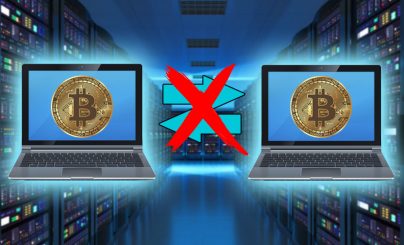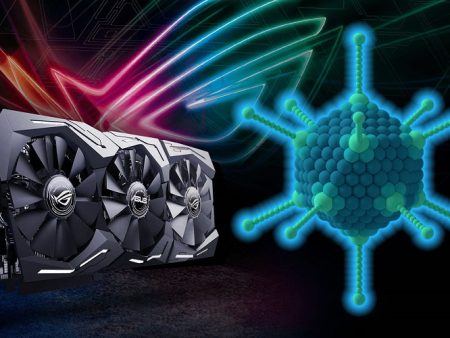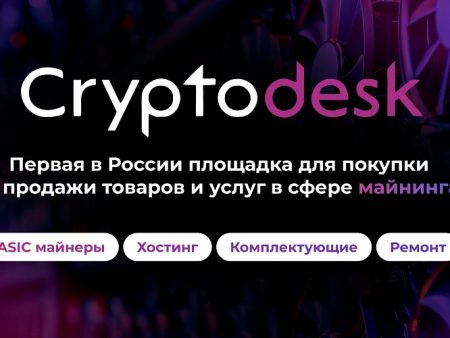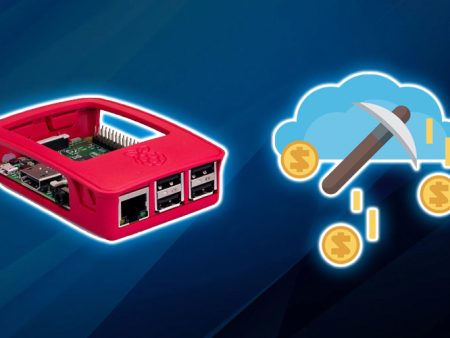
What is solo mining without a pool
Most miners work in pools. It is difficult to mine BTC, ETC, ALPH and other popular cryptocurrencies alone because of the high hash rate. However, working together greatly reduces income, because the reward for creating a block is divided among all users. Mining cryptocurrency together with other miners is more comfortable and easier. However, instead of the entire reward, the participant can only count on a small share. If the user does not want to share his earnings, he can try to mine cryptocurrency solo. His equipment will work separately and try to independently confirm transactions and create blocks in the chain. If it turns out to solve the crypto problem before others, the miner will take all the reward. At the same time, you can not confuse solo mining and work in solo pools. In the first case, the user creates and customizes his node. And in the second – connects video cards, ASICs to the pool, which does not combine hashrate, but pays 100% of the reward after deducting the commission to the one who creates the block. It is necessary to distinguish between them, because the concepts are being substituted and the essence of solo mining is being erased. Satoshi Nakamoto wrote about it: “One video card – one vote”. Each computer becomes a full-fledged participant of the network and is responsible for its development. To mine cryptocurrency, you need to set up your own node and connect your own video cards and asics to it. Otherwise, solo mining without a pool is no different – the farm solves cryptographic tasks, and the user receives coins on the connected wallet.
Features
This way to mine cryptocurrency is a casino and racing at the same time. In this case, the income of the miner depends only on the power of his equipment and the hash rate of the blockchain. And although it is possible to mine coins in solo, this method is risky. To get rewards for checking transactions every day, a powerful farm is required.

If a user plans to mine Ethereum Classic, a minimum of 5-10 Gh/s is required, otherwise the chance of earning is minimal. And unlike a pool, a miner will not even get a share of the coin. Therefore, to work solo, you need to be ready to make a large initial investment. Also, solo mining requires a deep understanding of cryptocurrencies. Simply mining popular BTC, ETH, ALPH will not work. Competing with pools with 1000 or more video cards alone is pointless. You need to know about the emergence of promising coins and mine them while the hash rate of the network is small. For example, Bitcoin used to be mined on home computers.
Another peculiarity arises from this. Solo mining is an investment for the long term. New coins have a small value, so you will have to wait for a good moment to sell them.
Pros and cons
Each method of cryptocurrency mining has advantages and disadvantages that are important to consider. This is especially true in 2023, where mining in general has become a controversial option to make money.
5020 $
bonus for new users!
ByBit provides convenient and safe conditions for cryptocurrency trading, offers low commissions, high level of liquidity and modern tools for market analysis. It supports spot and leveraged trading, and helps beginners and professional traders with an intuitive interface and tutorials.
Earn a 100 $ bonus
for new users!
The largest crypto exchange where you can quickly and safely start your journey in the world of cryptocurrencies. The platform offers hundreds of popular assets, low commissions and advanced tools for trading and investing. Easy registration, high speed of transactions and reliable protection of funds make Binance a great choice for traders of any level!
| Pros | Minuses |
|---|---|
Mining Calculator
Thanks to this program, the user will know how many blocks per day approximately will be created and what daily reward is possible. An online calculator (for example, 2CryptoCalc) is used to determine how profitable it is to mine directly solo without a pool yourself. For example, a user has 10 NVIDIA RTX GeForce 3090 graphics cards. They have a total hash rate from 550 Mh/S (ETC, ETHW) to 10 Gh/s (KASPA). In the calculator you need to specify the number of cards and see which coins it makes sense to mine. 2CryptoCalc will show the top 10 coins for mining on the user’s hardware. 10 video cards from the example above will bring profit in NEOXA mining. Up to 2 blocks can be mined per day, which will yield a total of 6393 NEOS ($6.25). The calculator does not take into account the cost of electricity and shows average values. On a good day, it may be possible to create 3-4 blocks, and on a bad day – none. Miners make more accurate calculations after a week of work. If the user does not want to take risks, it is worth searching the web for blockchain reviews and selections of coins for solo mining. The main thing is to find relevant information (not older than a month).
Equipment
For mining without a pool, a simple rule applies – collect as many hashes as possible per second. This is a key indicator of the farm, since the competitiveness and the probability of creating a block depends on it. However, it is also important to consider what exactly the coin can be mined on. For example, Ethereum Classic, like Ether before the update, has resistance to asics and is mined only on video cards. Bitcoin with the SHA-256 algorithm is captured by ASICs – powerful circuits whose hash rate is dozens of times higher than top GPUs. It is worth choosing versatile hardware. It is risky to spend years digging for one thing. The same BTC used to be mined on simple video cards, but now even 100 GPUs in solo mining is a drop in the ocean of hash rate. If possible, you should buy an ASIC with support for two algorithms – Gridseed GC3355, Baikal BK-D, or 15 or more video cards RTX 30-series. This will allow low hash rate options with a relatively high cryptocurrency price to be selected from all coins. When the complexity of the blockchain skyrockets, you can simply leave for another project. It’s worth noting that 2023 is a good year to build a new farm, as ASIC prices are still low. This could potentially reduce the payback period by 10-20%.
Installation and setup
Mining without a pool can be done on a standard GPU farm. The assembly requires:
- Motherboard.
- Processor.
- RAM.
- Hard disk or SSD.
- Power supply.
- Riser.
Before preparing the equipment, it is worth checking the condition of the electrics in the apartment. It is recommended to replace the outdated wiring with new copper wiring. Instructions for assembling the farm:
- Insert the processor and RAM into the motherboard.
- Connect the power supply, SSD.
- Connect the hard disk and the motherboard.
- Connect the video card to the PCI-e x16 slot, the rest – to PCI-e x1 via raisers.
- Power up the video cards.
Cryptocurrency selection
Mining BTC, ETC and other popular coins solo is not profitable. Due to the high hash rate of the network, it will not be possible to create new blocks on a home farm. To determine the approximate profitability, it is worth checking:
- The hash rate of the blockchain.
- Block generation time.
- Complexity of the network.
- Remuneration.
- The value of the cryptocurrency.
This information is publicly available, so there will be no difficulties in analyzing it. It is worth choosing blockchains with a total hash rate of up to 200-300 Gh/S. Otherwise, the chance of creating a block will be too low.
Step-by-step guide to solo mining
To start solo mining, you need to create and set up your own node – a wallet to which the blockchain will transfer rewards. When working in pools, a participant can enter the vault key that he usually uses. However, mining coins directly requires a separate address.
Setting up a wallet
To create your own node, you must first download the vault on the official website of the blockchain. After that, you should run the program on the farm and wait for the synchronization to complete. The next step is to create a .conf file. In it you need to fill in 20 parameters:
- Login.
- Password.
- Address from which the miner will connect to the wallet.
- Port for connecting to the network.
- Operator of the correct operation of the wallet.
- The command that converts the wallet into a server to accept the miner’s data.
- Data transfer operator.
- Addresses of NODs (12 lines), at which the correct synchronization of the wallet and the network takes place.
After customization, the file should be saved and renamed bottlecaps.conf. Then it is moved to the coins folder and run the wallet. It remains only to configure the miner to mine cryptocurrency. Instructions:
- Download a program (for example, BFGminer) from the developer’s website.
- In the folder, create a text file and specify in it the command that starts the miner, blockchain algorithm, port address, username, password, names of devices that should connect.
- Save the file with the .bat extension.
Prospects for solo mining in 2024
Falling cryptocurrency rates (including Bitcoin), Ethereum’s transition to the PoS algorithm, and the jump in hash rate make it more difficult to enter the industry. Earlier, 10-12 good video cards were enough for solo mining of Ether without a pool, but now it is difficult to mine even ETC alone. Industrial miners with a hash rate of more than 100 Gh/s, which provides a stable income without a pool, are mostly engaged in it. Home farms in 2023 are more efficient in pools, which allow you to gradually recoup your investment. However, solo mining should not be “buried”. The creation of blocks depends not only on the power of the equipment, but also on luck. In 2023, a miner opened block #772,793 with a hash rate of 0.000000036% of the total computing power of Bitcoin. This proves that mining solo is still possible, but its profitability is questionable. To engage in mining without a pool, you need to invest heavily and constantly search for promising coins. It is necessary to buy at least 3-4 asics or, for example, 40-50 graphics cards NVIDIA RTX 3090, which will provide 5 blocks of NEOXA, 6 – Firo, 2-3 – ETHW. However, even in such conditions, coins are more mined with the expectation of their future growth. Therefore, if the goal of a miner is to earn a good amount of money in 2-3 months, then now is not the best time for mining.
Summary
Solo mining is a classic blockchain support option, conceived as early as Satoshi Nakamoto. Right now, it is struggling due to rising hash rates and falling coin values. However, with a good understanding of the cryptocurrency market and the ability to identify projects that have the potential to “shoot”, solo mining can be better than pools. The miner is unlimited in the choice of assets and blockchains. If the crypto miner plans to mine coins alone, it is worth using asics that give a hash rate of more than 20 GH/s and support altcoin algorithms. If the processing power is less, there will be days and even weeks when it will not be possible to open a single block. It is also worth taking care of electricity in advance. You need to reduce the associated costs that will make mining in 2023 even less profitable. To create a new farm, it is worth considering Siberia, where the price of electricity rarely exceeds $0.04 per kW. At the same time, it sells for $0.09 in Moscow. Moving the equipment will reduce costs by more than 50%.
Frequently asked questions
🔔 How can I find out the algorithm of an asic?
To do this, you need to go to the WhatToMine website and open the ASIC section. It contains all popular devices and indicates their algorithms, and next to it – the approximate income when mining coins.
🔥 Can I overclock video cards for mining?
Yes. It increases the hash rate of the equipment by 10-15%. The main thing is to monitor the GPU temperature and put additional fans.
⚡ What does the hash rate depend on?
It is affected by video card model, connection method, operating system and timings.
🛒 Do I need to buy more fans?
If the air temperature is more than 25 degrees and the equipment heats up more than 80 degrees, additional cooling is needed. It should not be allowed to warm up above this point or wear and tear will accelerate.
📢 What to look for when choosing ASICs and video cards?
You need to consider the cost of the equipment and energy efficiency. The second parameter shows how much electricity you will have to spend on TH power.
✨ Is it possible to mine coins on a CPU?
Yes. There are blockchain algorithms specifically for CPUs – CryptoNote, X16Rv2. Then it is necessary to choose powerful hardware from AMD and Intel.
Is there an error in the text? Highlight it with your mouse and press Ctrl + Enter














